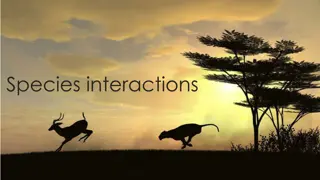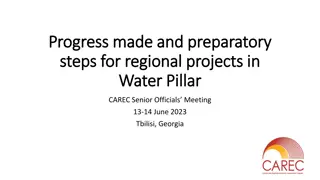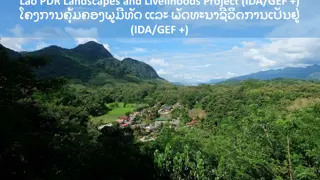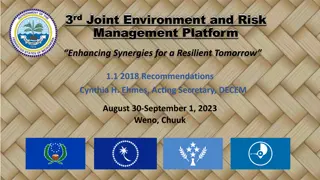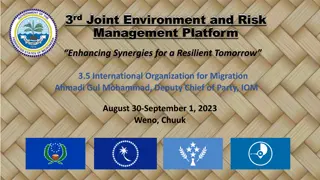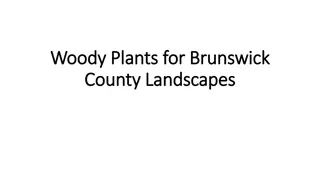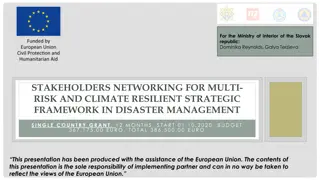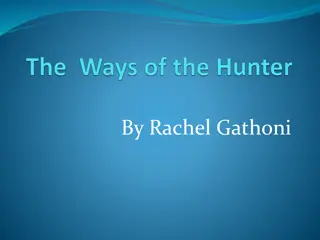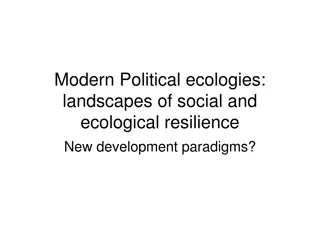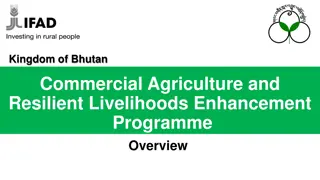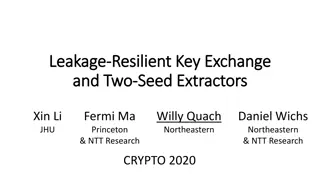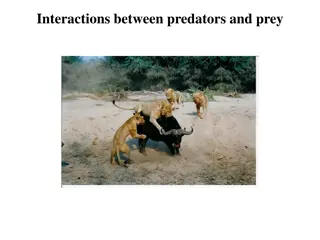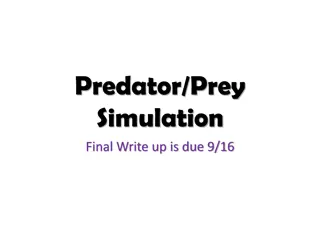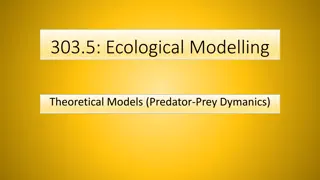Managing Predator Impacts for Resilient Landscapes
This article discusses strategies for managing predator impacts in landscapes to promote resilience. The authors, affiliated with leading Australian institutions, address the importance of addressing predator-prey dynamics for ecosystem health and conservation efforts.
Download Presentation

Please find below an Image/Link to download the presentation.
The content on the website is provided AS IS for your information and personal use only. It may not be sold, licensed, or shared on other websites without obtaining consent from the author.If you encounter any issues during the download, it is possible that the publisher has removed the file from their server.
You are allowed to download the files provided on this website for personal or commercial use, subject to the condition that they are used lawfully. All files are the property of their respective owners.
The content on the website is provided AS IS for your information and personal use only. It may not be sold, licensed, or shared on other websites without obtaining consent from the author.
E N D
Presentation Transcript
Managing predator impacts for resilient landscapes Guy Ballard1,2, Andrew Claridge1,2, Annalie Dorph1, Amy Edwards1,3 and Jaime Heiniger1,3 1 School of Environmental and Rural Science, University of New England, NSW, 2351, Australia 2 Vertebrate Pest Research Unit, NSW Department of Primary Industries, Orange, NSW, 2800, Australia 3 NSW National Parks and Wildlife Service, Parramatta, NSW, 2124, Australia Email: gballar3@une.edu.au
Acknowledgement of Country We thank the Noongar people for hosting us on their lands and acknowledge the many Traditional Owners we work with across Australia, and their continuing connection to and stewardship of land, sea and community. All members of our research team pay our respects to Traditional Owners, their cultures and to their Ancestors and Elders. Our Indigenous research partnerships are a valued and respected component of National Environmental Science Program research, as well as those of the NSW State Government and the University of New England.
Predators have multiple roles Predators provide ecosystem services by: 1. Hunting may have multi-level consequences 2. Moving transports organisms / propagules 3. Dying provides food / resources for other organisms Humans see some services as positive, others as negative. Land managers want to maximise the good and minimise the bad
Feral cats pose a massive problem Feral cats are: Hunting preying unsustainably on endemic fauna Moving harmful parasites / disease through our landscapes, impacting endemic fauna, livestock, pets and people Dying They do provide food / resources for other predators but as a population are more than coping with this pressure. That feral cat , Kaye Kessing 1990
Australian predator management We tend to worry first about minimising harm: Stopping harmful effects of predation Limiting spread of disease Alleviating competition with endemics (e.g. quolls!) With feral cats we have become desperate ; Dead feral cat, Image: G. Ballard National Key Threatening Process listing National Feral Cat Taskforce New lessons re impacts on people, wildlife, livestock and pets Toxoplasma gondii, Montoya & Contopoulos- Ioannidis (2021)
Expected cost Fleming, Ballard, Reid and Tracey 2017
(Re) creating resilient landscapes We want landscapes to withstand, or rapidly recover from, damaging events and processes Local asset protection won t provide landscapes resilient to feral cat impacts We need to suppress feral cats effectively at relatively large scales AND undertake complimentary actions to promote resilience Instead, we tend to take a simple approach: 1. Cats are bad for wildlife 2. Let s kill as many cats as we can! 3. Negative impacts will probably* decrease All reinforced by an optimistic social norm: we are doing something! * we often cannot guarantee negative impacts will decrease!
Coordination Feral cat control (at useful scales) in open landscapes Fenced areas to protect at-risk fauna Effective domestic cat management Reliable monitoring Advanced technologies (esp. control and monitoring) Science Public support
Developing effective feral cat management strategies (NSW) 6 year project (2019 2025) Operating in 3 ecoregions of New South Wales Northern temperate forests/woodlands, 4 x 20,000 ha sites (2 treatment, 2 business as usual ) Southern coastal forests, 3 sites (1 treatment, 2 business as usual ) Central semi-arid mallee, 3 sites (1 treatment, 2 business as usual ) Trying to: measure the impact of various tools / strategies on feral cats and other fauna Improve the way we monitor and control feral cats
How do we get densities low and keep them there? Effective strategies for feral cat control Reduced effort associated with effective monitoring Cost-effective feral cat monitoring Reduce risks from: Disease, Predation, Competition Stabilise / recover threatened fauna Land managers trained in best practice Key lessons shared to grow community of practice
Playing catch up re baiting cats 2020 Baseline 2021 Winter baiting 2022 Wild dog baits 2023 Fox baits 2024 Eradicat ???
Decision Support Tool for managers Dr Annalie Dorph (UNE) is developing an online tool to help guide managers of feral cats (and red foxes). Feral cat research and management experts are contributing their time and knowledge to help others make management decisions with confidence. In 2022, we held our first expert elicitation workshop Expectations about management outcomes were quantified, and Research priorities for feral cats were determined
Expected impacts on cat populations From Dorph et al. (in prep.)
National research priorities: 1. How should we monitor, to inform management? 2. What are the impacts of cats/foxes/dogs on prey species, with and without management? 3. What is the longevity of a management program (i.e. time to repopulation / reinvasion)? 4. How much transfer of cats occurs between urban and natural environments? 5. Which areas do we prioritise for eradication?
Coordination Feral cat control (at useful scales) in open landscapes Fenced areas to protect at-risk fauna Effective domestic cat management Reliable monitoring Advanced technologies (esp. control and monitoring) Science Public support
Projects to improve landscape resilience We are currently scoping new projects via the NESP Resilient Landscapes Hub In line with the TSAP we are actively discussing work involving / related to: Understanding changes in feral cat ecology as their densities are reduced Cat-Fox interactions in managed and unmanaged areas Roles of lures / deterrents in feral cat management New tools to aid management and/or monitoring of feral cats
Acknowledgements The NSW Environmental Trust Resilient Landscapes NESP Hub Local Land Services NSW NSW National Parks and Wildlife Service NSW Department of Primary Industries University of New England Technical staff and research students Neighbours, collaborators and community research partners
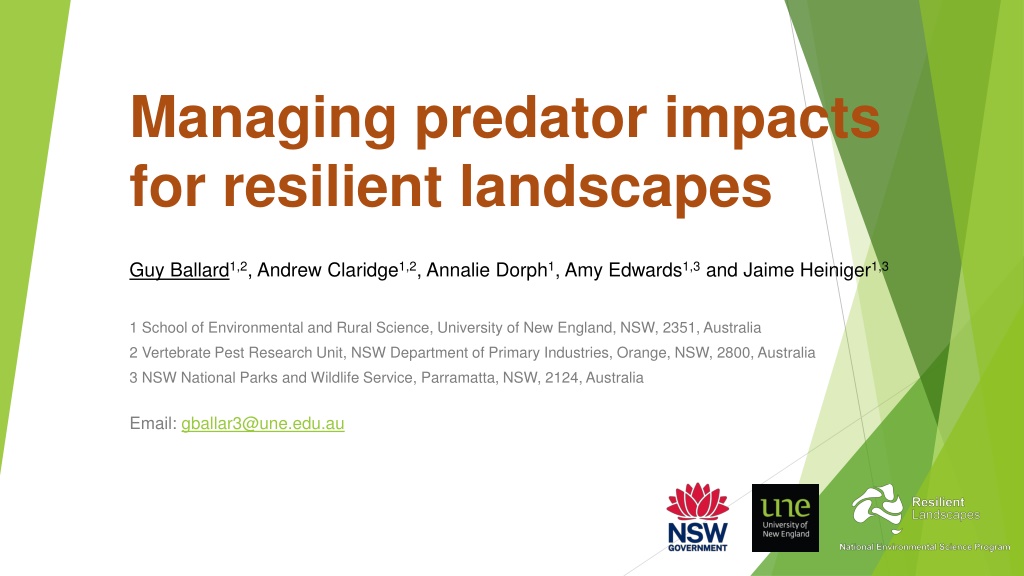
 undefined
undefined







